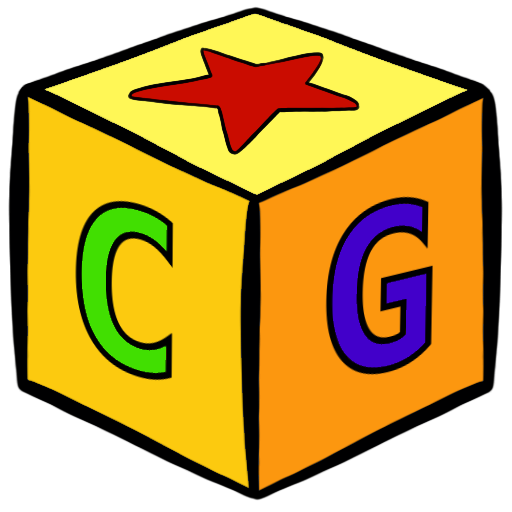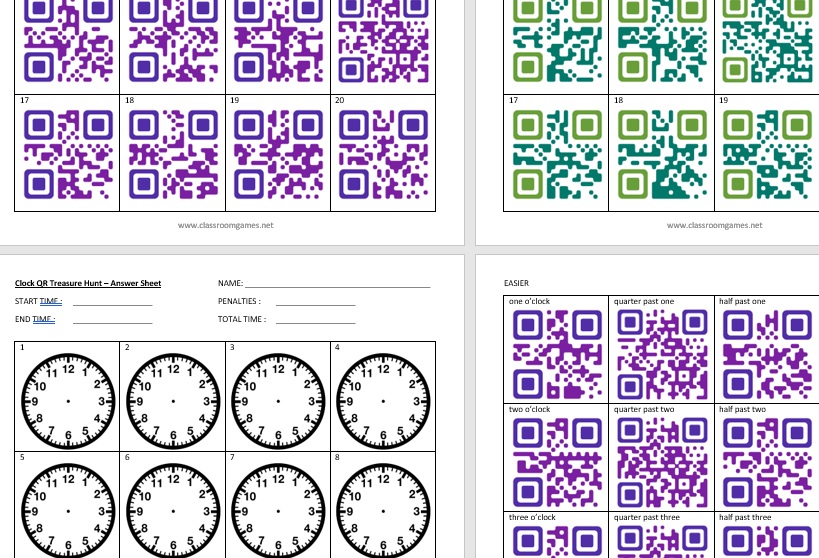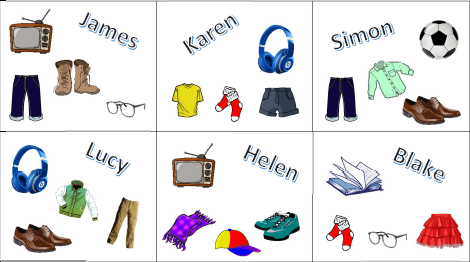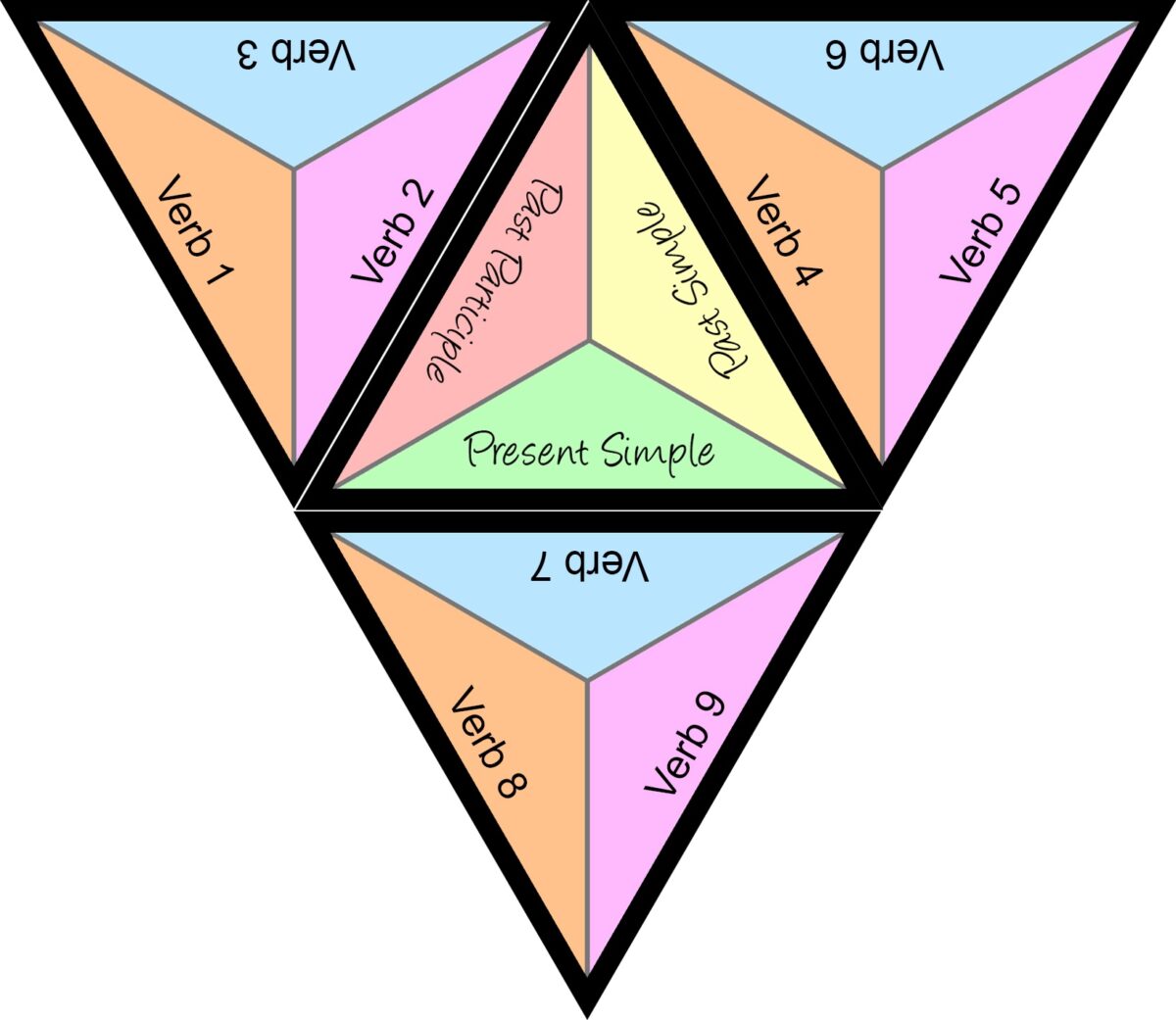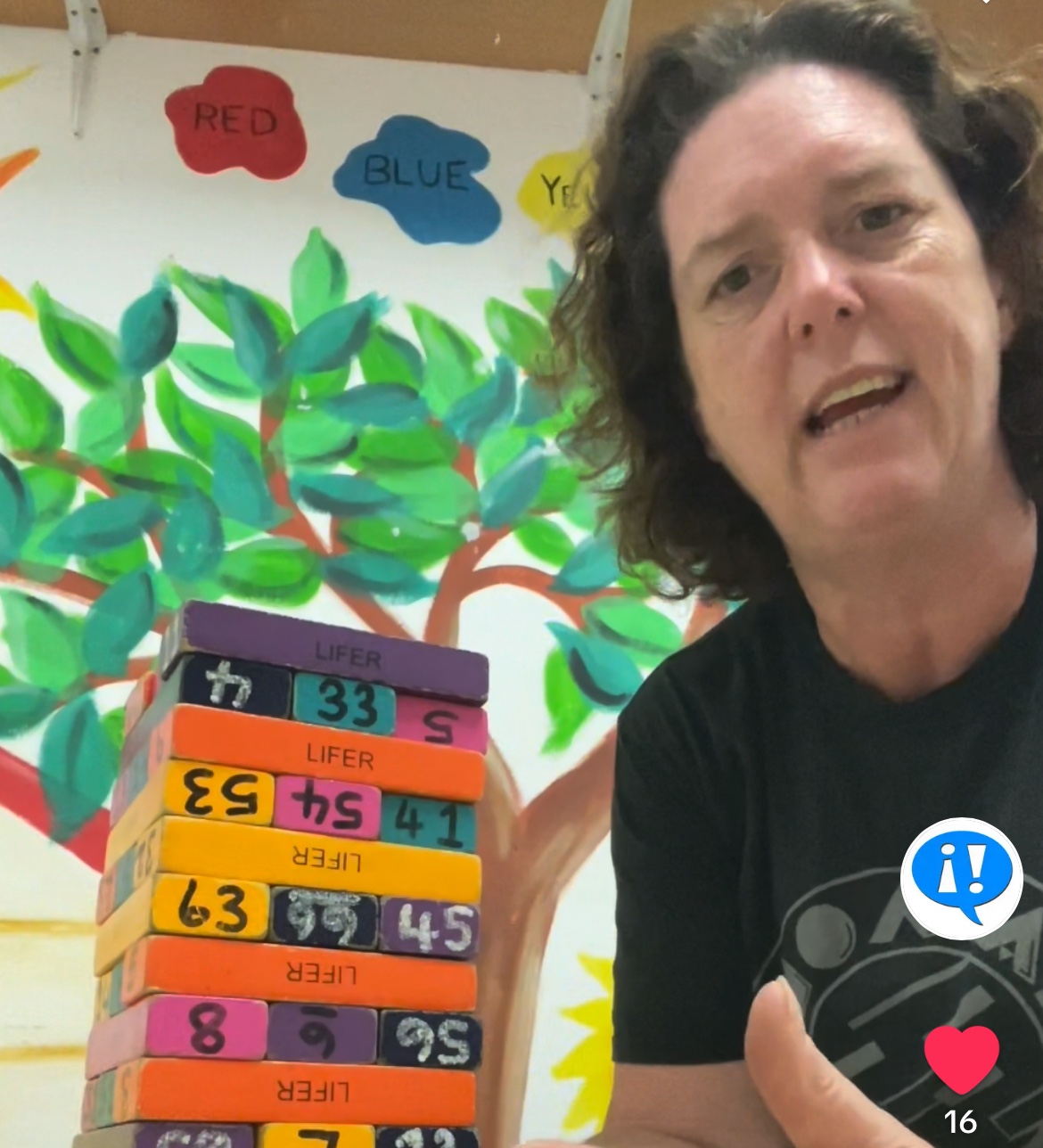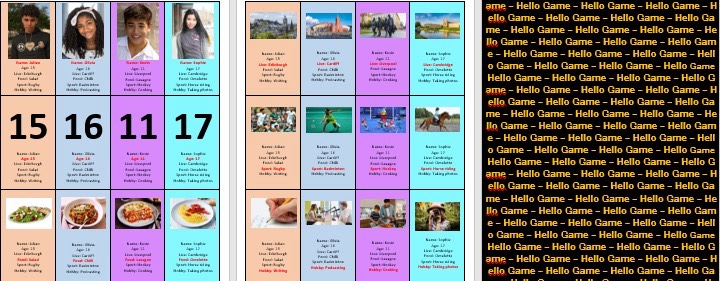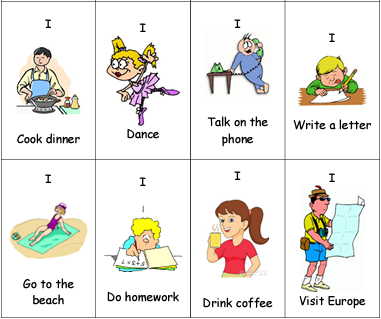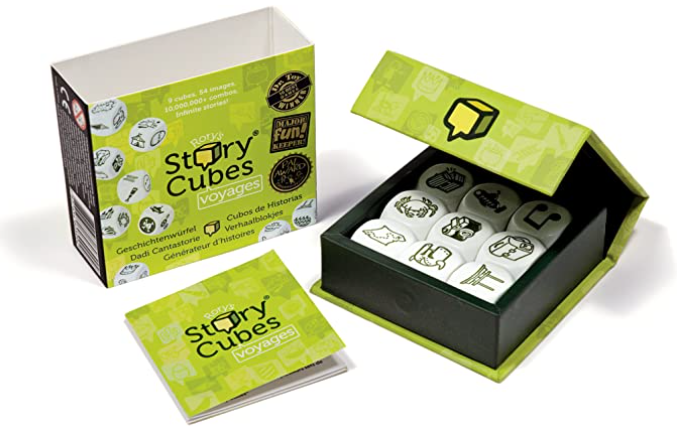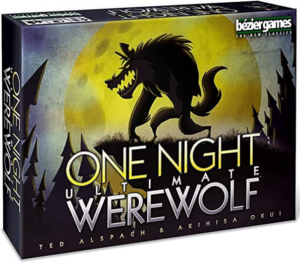This is a fun activity to practice telling the time in English. You could translate it for other languages and vary the level depending on your students.
This is a fun and engaging way to motivate your students, giving them a real reason to tell the time! It’s based on reading and understanding skills, so even if students aren’t that good at writing and spelling, they can still take part.
How to use it
Just download and print out the document and cut out the QR codes. Stick them around your class or school, or any other safe area you can use, and give each student or team one of the answer sheets.
Each answer sheet has a start time and an end time. Students scan the QR codes using a mobile device and have to draw the correct time on the clocks. There is a penalty for each incorrect answer. You can decide how much you want the penalty to be, I tend to use 10 seconds. This encourages accuracy!
The winner has the shortest time after all penalties have been added.
Important stuff
The document is in DOCX format and has lots of extra QR Codes so that you can change the quiz if you like and adapt it to your students’ level before printing it out.
You will need a mobile device with a QR code reader for each student or team participating. Most phones these days have one in the camera, but if not, there are many free ones on the Apple and Google Play stores. Make sure you prepare this in advance though, if they need to have it downloaded.
Let me know if you use this activity in your class and how it goes!
Download it here : https://classroomgames.net/product/qr-code-time-treasure-hunt/
